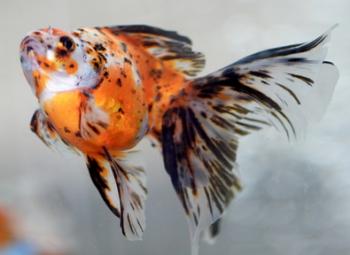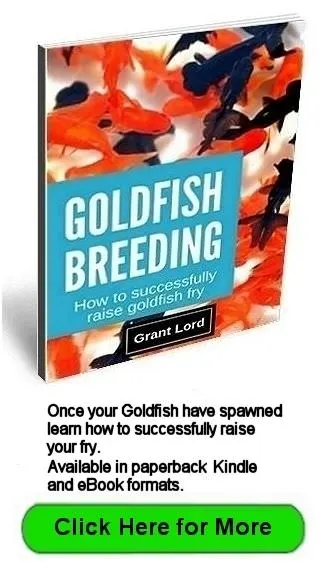Veiltail Goldfish Care, Feeding, Diseases, Breeding, and more...
The Veiltail is considered the premier Goldfish in Western countries.

The Veiltail Goldfish is thought to have originated in the Philadelphia area about the turn of the 20th century.
The veiltail has long flowing fins and normal eyes. The veil-tail trait has been developed in many other goldfish varieties, but the true Veiltail is bred solely for its finnage and body shape.
Many long finned goldfish are called Veiltails, but the most important difference between these and true Veiltails is the fork in the caudal fins. There should be little or preferably, no fork.
A high quality Veiltail will have fully divided caudal fins as long as or longer than the body, twin anals and an almost spherical body shape. The dorsal fin should be as high as the body is deep, and held very erect.
Veiltails can be metallic, nacreous (calico) or matt scaled.
Because of the spherical body shape, the two swim bladders’ shapes are changed from elongated to round. This makes them susceptible to poor food or chills which causes a loss of equilibrium. It’s not uncommon for veiltails to become unbalanced as they reach maturity.
Because of the excessively long fins, proper feeding is a must to avoid ragged or congested fins developing.
Veiltail Goldfish Characteristics
Country of Origin: USA
Maximum size (body length): 5 inches (125mm)
Caudal Fin: Paired, must be as long as or longer than the body with little or no fork.
Dorsal Fin: Present
Anal Fin: Paired
Scale Type: Represented in all three scale Types
Eyes: Normal
Distinguishing traits: Long flowing fins, caudal fins have little fork, deep body
Breeding: The fin development can be so great that movement is severely restricted. Have plenty of open spaces in the breeding container so the breeders don’t get caught up in the spawning medium as they could have difficulty freeing themselves.
Male/female differences are less obvious outside the breeding season because of the short round body shape. Often the female will have a slimmer body shape than the male giving the impression she is a male.
The white tubercles that appear on the male’s operculum (gill plates) and leading edges of the pectorals are a sure sign of the male gender.
Select young for breeding that have long anal fins, as it is a good indication that they will develop the long flowing fins later in life. Young fish showing excessive fin growth early are normally the smaller specimens of the brood that seldom reach maturity. It is often the smaller finned individuals that are growing well and not putting much energy into fin development that turn out to be the best fish.
Special requirements: Not to be kept with active goldfish, susceptible to chills and poor feeding.




